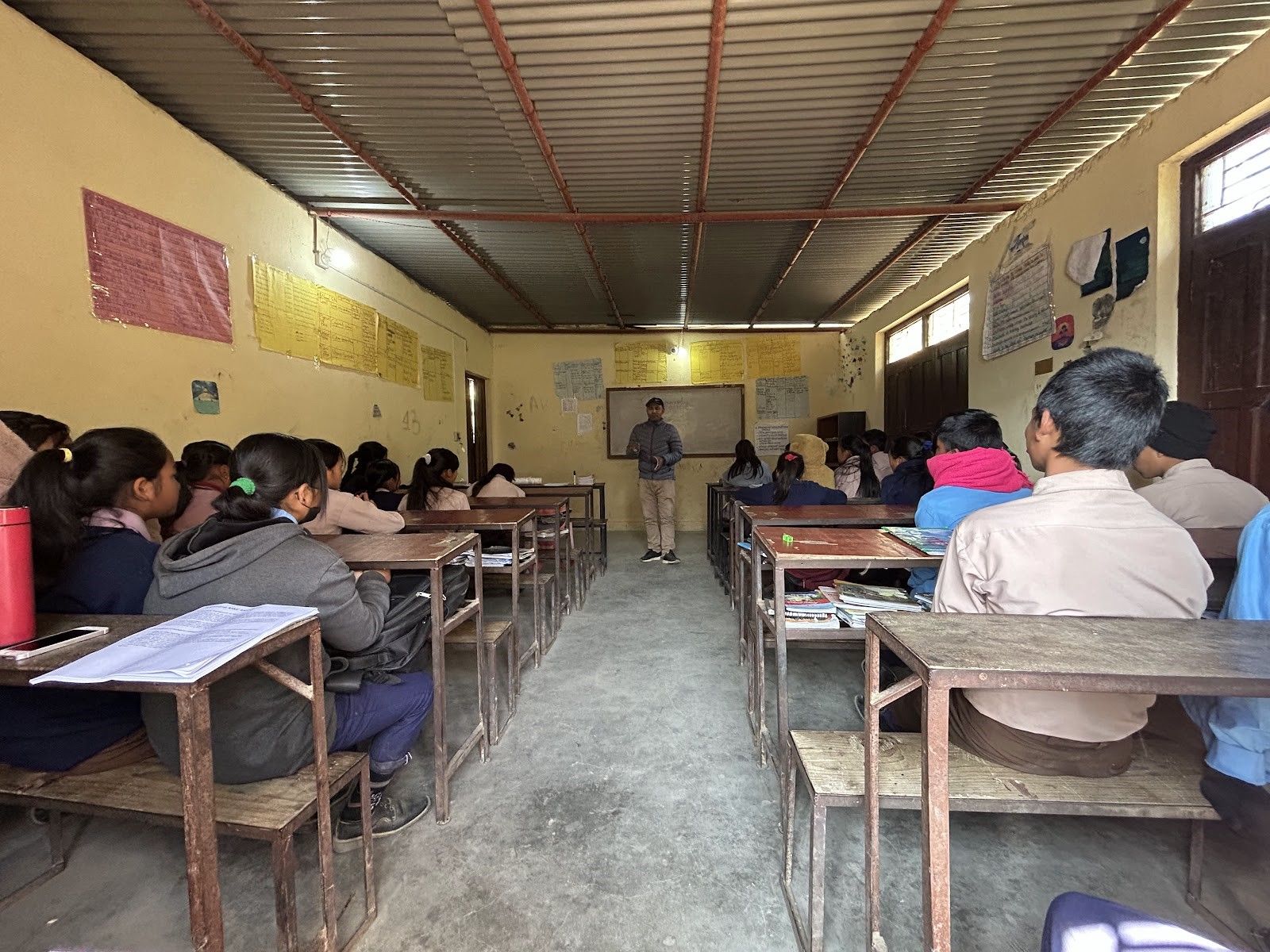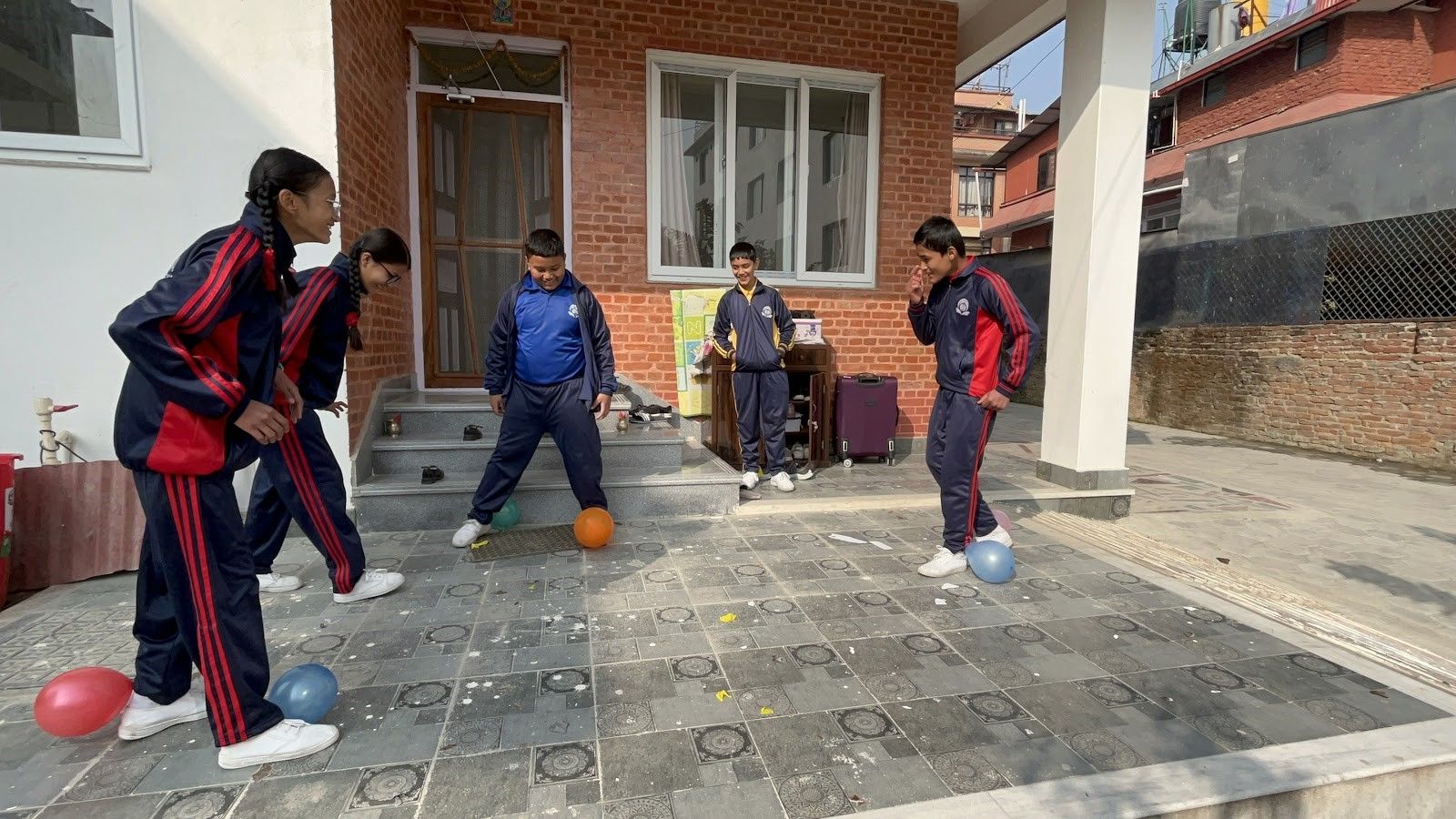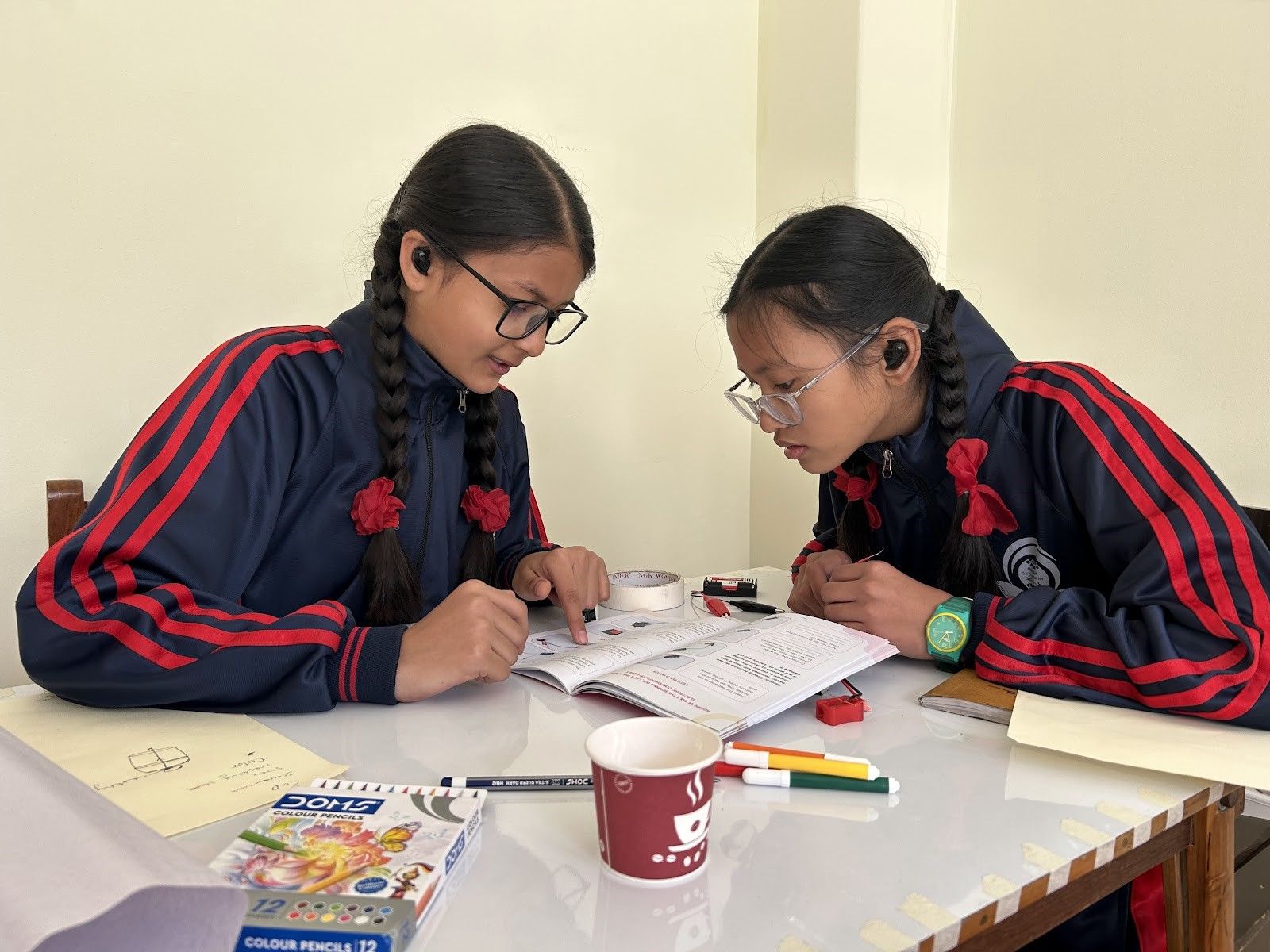Learning Spaces & Classrooms
Observing the impact of physical and mental space in learning
The spatial features of a classroom play an important role in learning. Typically, in Nepal’s schools, desks and benches are arranged in two rows with a small aisle in the middle. Such a design means that the mobility of students is restricted and limited to a few inches of movement to either side of their small territory in a bench shared by three or four students. Karkhana Samuha’s classes have adapted to this set-up over the years, for example by pairing up two teachers to navigate especially difficult classroom arrangements, At a glance, teachers were able to engage students in a limited physical space.
However, in the past two years, in the process of developing and testing an assessment tool to capture the learning and growth of students, the issue of physical space and set-up has reemerged in an interesting way. It has prompted us to reconsider the limitations of core aspects of our program design, objectives and philosophy of learning.

In the testing phases of the assessment tool, a recurring issue we encountered was difficulties with capturing video (and audio) observations because of physically congested classrooms. Most schools do not have quiet, well-lit rooms where smaller groups of students can move and talk freely without space related challenges. In Kathmandu, public schools are built in small properties within very close proximity to residential homes and often do not even have a play area (playground) for students. Therefore, expensive recording devices did not offset the challenges of capturing usable observations.
In creating more spacious environments for students to work on projects and capture clearer observations and audio, we set five students in a well lit room at our office space. These students were invited from a private school near our office space. We set up a camera in one corner, close enough for good video quality but with enough room for them to move around without bumping into equipment. The mics were attached to their desks. The facilitator stepped in front to brief the students about the lesson which was the balloon powered cars.

But even in a quiet, spacious room where students could hear each others’ voices, students began communicating in whispers or low voices, barely moving from their chair. In the first 10 minutes we thought it might be because the facilitator was in the room so we asked her to step out. But the whispering continued throughout the 2 hour session. When students were asked to come out of the room into a larger space to test their projects, they hesitated.
Creating this space did not really serve the objective that we thought it would. We had assumed it would improve student engagement. We thought more space and fewer physical obstructions would encourage students to open up. Instead, students were quiet and less animated. Students seemed to feel more conscious of their behavior in a smaller space rather than the 30 or classroom size spaces they are used to. The presence of cameras and mics amplified their hesitation to open up even if the facilitator was absent from the room for most of the session.
However, this hesitation about “being seen” could also be connected to other important cultural factors. A majority of students we engage with across public and private schools are disciplined into taking up as less verbal and physical space as possible. Discussions are not encouraged and most speaking they do during lessons do not involve spontaneous thoughts, discussions or questions but mostly include textbook answers to formal questions. Therefore, Karkhana Samuha’s “instruction” to use up more space or speak freely does not always resonate in a majority of classrooms in Nepal.

The small number of schools/classrooms in which these instructions resonate for children also have specific social and cultural characteristics. They are private schools with high fee demands and serve families and children that are open to ‘alternative’ forms of education. Although ‘being disciplined’ i.e. quiet and obedient still figures deeply in these schools, there is more flexibility to experiment with different ways of learning. Students are also privy, through social networks and cultural reach, to different ways of expressing themselves. A telling difference between these schools and others could be found in video observations in which some students would directly address the camera and make jokes but still continue to work on their projects without it affecting their working styles. So even the kind of ‘camera conscious’ behavior tends to be vastly different in these schools and classrooms.
A lot of this discussion points out challenges with material resources such as cameras, mics, arrangements of desks and classrooms which concerns were initially prompted by our goal of making and improving an assessment tool. However, our logistical failures have prompted us to pay attention to important concerns in learning that are related to cultural factors and in the process brought up critical questions we must reflect on in future program design and implementation.